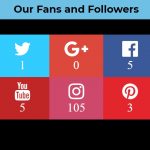Now that Facebook and Instagram have become pretty much entirely Pay to Pay for businesses, it’s become more imperative to justify your investment of time, effort and money in end results.
I’ve had calls and emails from cleaners asking: ‘Is there any way I can measure how my efforts on social media are paying off? My answer is: ‘Yes, you CAN actually measure a return on investment in social media.’ It comes down to using tools provided to you by each social media channel, setting some goals and developing some habits to routinely check and monitor your efforts.
Let’s start with the most popular channel out there; Facebook. Every business page on Facebook is provided a tool called ‘Insights.’ Insights records each post you’ve made by date and time, type of post made, a screenshot of the post/image, targeting used (if any), whether the post was boosted or not (and if boosted, details about the boost and results), and the all-important reach (paid or organic) and engagement for each post.
Reach scores of each post offer extremely valuable information, and form the basis of one of the return on investment basics I follow. Reach is broken down into two types, and that is, your organic and paid reach.
~ Organic reach is the natural reach of a post, or how many people saw your post without being promoted, boosted or otherwise advertised.
~ Paid reach is reach that you’ve paid to promote to all your followers or targeted potential users.
Organic reach: If you are paying someone to develop content and posts for you, and it cost you $50.00 to have that content created, and the organic reach was 100 people, it cost you fifty cents per person to reach those people. If you are developing your own content yourself, then it’s darn near free, your only investment is your time away from working in or working on your business (and that could end up being a bargain, or very expensive – but that’s for another article).
Paid reach: comes mostly in the form of a boosted post. A boosted post is post content you have paid a fee to boost distribution to just your page followers, people in a certain geographic area around your business (like five miles around your store), targeted via interest, demographic or other means. As an example, let’s use a boosted post that targeted all facebook users within ten miles of your store location with a budget of $5.00, and it reached 409 people. Of course, even a boosted post has some organic reach, but the Insights tracking system will show you the actual number of folks reached organically, and the number of folks you paid to reach separately. In our example, the organic reach was 23 people, leaving 386 people we paid Facebook to reach for us. $5.00 divided by 386 equals a cost of 0.0129 per customer reached, or rounded off, it cost 1.3 cents per customer reached.
Of course, you may have had to pay someone to develop the content, so again, let’s add in that cost of $50.00 to the cost of boosting the post for a total of $55.00, and the cost of reaching all people works out to 13 cents per person reached.
Now, let’s take a look at the all-important engagement with your post. Let’s use the Paid reach example above once again, and this time we add in one LIKE of your post. At a cost of $5.00 for the boost and a cost of $50.00 to develop the content posted, that one like cost $55. Now, whenever your content is liked, Facebook’s algorithm is designed to give your organic reach a tweak and push the post out to more people. Given that Facebook’s algorithm is extremely technical, not to mention somewhat proprietary, and frankly, I could not slice a penny thin enough to account for the financial value of the reward of the extra reach of one like on a post, let’s just leave this out for now.
Now, if you had a page with tens of, hundreds of, or millions of fans, that algorithm regarding posts does factor into your numbers; which raises the question of our next Key Performance Indicator one should be following….and that is the size of your fan base, or number of fans and followers you have. The entire idea behind social media is to build a fan base or following or interested in your brand.
If you are making an effort on multiple social media channels working Facebook, Instagram, Google Plus, Twitter, You Tube and Pinterest, you definitely want to keep an eye on how your audience grows (or doesn’t grow). I found it difficult to keep logging into multiple channels to check on numbers, so I’ve developed my own social media counter that displays a client’s fan base in real time. Here is a screen shot of what I’ve developed.
As you can see, each platform is displaying an actual count of fans and followers for each of the major social media channels. You could put this up on a flat screen in your office and your store lobby (or lobbies) showing (and encouraging) other customers who may not be following you to like or follow you. I do have plans to upgrade my social media counter system to make it easier for customers to follow you, even including reputation management and reviews into the display.
But online marketing is not the only media you should be using to develop your follower base. You should also be using point of sale materials, hang tags, business cards, digital signage and more. These days your customer can be encountered in both offline and online worlds. You really need to make it as easy as possible for customers to find you, and follow you.
Now, you may be wondering, why the push to build a following when some of the major social media platforms are becoming pay to play. Well, even though there may be increased costs associated with using some platforms to get your message out, the costs of using them are still one of the most affordable mediums to use around. What does it cost you to send direct mail to your customers or prospective customers? That’s right, it can cost anywhere from 50 cents to a buck fifty to send a post card PER CUSTOMER. As you can see from the numbers above, the cost per contact using social media may not be free, it is much less, and your communication budget goes further. And now you know how to compare some of the costs and what you are getting in return from your social media efforts.


